کتاب مواد افزودنی پلیمرها: آنالیز صنعتی و کاربردها، تمام روشهای آنالیز جهت تعیین فرمولاسیون مواد پلیمری، با تاکید بر اجزای غیر پلیمری را پوشش میدهد.
در این کتاب هر کدام از تکنیکها بر اساس ویژگیهای فنی و ویژگیهای صنعتی آن مورد بررسی قرار میگیرند و اساس آن درک اصول و ویژگیها و کاربردهای صنعتی است. این کتاب شامل بیش از 200 شکل، 400 جدول و 3000 رفرنس میباشد.
TABLE OF CONTENTS
Foreword ix
Preface xi
About the Author xiii
Acknowledgements xv
Chapter 1 Introduction 1
1.1 Additives 2
1.1.1 Additive functionality 3
1.2 Plastics formulations 5
1.2.1 Supply forms 7
1.2.2 Additive delivery 9
1.3 Economic impact of polymer additives 9
1.4 Analysis of plastics 11
1.4.1 Regulations and standardisation 15
1.4.2 Prior art 17
1.4.3 Databases 19
1.4.4 Scope 20
1.4.5 Chapter overview 22
1.5 Bibliography 23
1.5.1 Plastics additives 23
1.5.2 Processing technologies 23
1.5.3 Instrumental analysis 23
1.5.4 Polymer analysis 24
1.5.5 Polymer/additive analysis 24
1.6 References 24
Chapter 2 Deformulation Principles 29
2.1 Polymer identification 30
2.2 Additive analysis of rubbers: ‘Best Practice’ 32
2.3 Polymer extract analysis 42
2.4 In situ polymer/additive analysis 46
2.5 Class-specific polymer/additive analysis 47
2.6 Bibliography 48
2.6.1 Polymer identification 48
2.6.2 Deformulation of rubbers 48
2.6.3 Deformulation of polymers 48
2.7 References 48
Chapter 3 Sample Preparation Perspectives 51
3.1 Solvents 54
3.1.1 Polymer solubility criteria 55
3.1.2 Solubility parameters 55
3.1.3 Polymer solutions 56
3.2 Extraction strategy 57
3.3 Conventional extraction technologies 59
3.3.1 Liquid–liquid extraction 60
3.3.2 Liquid–solid extraction 60
3.3.3 Classical solvent extractions of additives from polymers 61
3.3.4 Sonication 75
3.4 High-pressure solvent extraction methods 81
3.4.1 Supercritical fluid technology 81
3.4.2 Analytical SFE 85
3.4.3 Subcritical water extraction 100
3.4.4 Microwave technology 101
3.4.5 Microwave-assisted extractions 104
3.4.6 Pressurised fluid extraction 117
3.5 Sorbent extraction 123
3.5.1 Solid-phase extraction 124
3.5.2 Solid-phase microextraction 129
3.5.3 Stir bar sorptive extraction 133
3.6 Methodological comparison of extraction methods 134
3.6.1 Experimental comparisons 136
3.6.2 Extraction selectivity 138
3.6.3 ‘Nonextractable’ additive analysis 140
3.7 Polymer/additive dissolution methods 146
3.8 Hydrolysis 152
3.9 Bibliography 155
3.9.1 Sampling and sample preparation 155
3.9.2 Solvents/solubility 155
3.9.3 Extraction methods 156
3.10 References 156
Chapter 4 Separation Techniques 171
4.1 Analytical detectors 177
4.2 Gas chromatography 181
4.2.1 High-temperature gas chromatography 200
4.2.2 Headspace gas chromatography 202
4.3 Supercritical fluid chromatography 205
4.4 Liquid chromatography techniques 217
4.4.1 Planar chromatographies 218
4.4.2 Column chromatographies 230
4.5 Capillary electrophoretic techniques 273
4.6 Bibliography 278
4.6.1 General texts 278
4.6.2 Detectors 279
4.6.3 Gas chromatography 279
4.6.4 Supercritical fluid chromatography 279
4.6.5 Thin-layer chromatography 279
4.6.6 Liquid chromatography 280
4.6.7 Size-exclusion chromatography 280
4.6.8 Ion chromatography 280
4.6.9 Capillary electrophoretic techniques 280
4.7 References 281
Chapter 5 Polymer/Additive Analysis: The Spectroscopic Alternative 299
5.1 Ultraviolet/visible spectrophotometry 302
5.2 Infrared spectroscopy 311
5.3 Luminescence spectroscopy 318
5.4 High-resolution nuclear magnetic resonance spectroscopy 323
5.4.1 Multidimensional NMR spectroscopy 336
5.5 Bibliography 342
5.5.1 General spectroscopy 342
5.5.2 Ultraviolet/visible spectrophotometry 342
5.5.3 Infrared spectroscopy 342
5.5.4 Luminescence spectroscopy 342
5.5.5 Nuclear magnetic resonance spectroscopy 342
5.6 References 342
Chapter 6 Organic Mass-Spectrometric Methods 349
6.1 Basic instrumentation 351
6.1.1 Inlet systems 352
6.1.2 Modes of detection 353
6.1.3 Mass resolution 354
6.1.4 Isotope distributions 354
6.1.5 Accurate mass measurements 355
6.2 Ion sources 357
6.2.1 Electron impact ionisation 360
6.2.2 Chemical ionisation 362
6.2.3 Metastable atom bombardment 367
6.2.4 Fast atom bombardment 367
6.2.5 Field ionisation 372
6.2.6 Field desorption 374
6.2.7 Thermospray ionisation 376
6.2.8 Atmospheric pressure ionization techniques 378
6.2.9 Desorption/ionisation methods 383
6.2.10 Photoionisation techniques 385
6.3 Mass analysers 386
6.3.1 Sector analysers 387
6.3.2 Quadrupole mass spectrometers 389
6.3.3 Time-of-flight mass spectrometry 390
6.3.4 Quadrupole ion trap 393
6.3.5 Fourier-transform ion-cyclotron resonance mass spectrometry 395
6.3.6 Tandem mass spectrometry 398
6.4 Direct mass-spectrometric polymer compound analysis 407
6.5 Ion mobility spectrometry 415
6.6 Bibliography 417
6.6.1 Mass spectrometry (General) 417
6.6.2 Mass spectrometers 417
6.6.3 Ionisation modes 417
6.7 References 418
Chapter 7 Multihyphenation and Multidimensionality in Polymer/Additive Analysis 425
7.1 Precolumn hyphenation 428
7.1.1 Chromatographic sampling methods 432
7.2 Coupled sample preparation – spectroscopy/spectrometry 449
7.3 Postcolumn hyphenation 452
7.3.1 (Multi) hyphenated GC techniques 456
7.3.2 (Multi) hyphenated SFC techniques 475
7.3.3 (Multi) hyphenated HPLC techniques 489
7.3.4 Hyphenated SEC techniques 527
7.3.5 Hyphenated TLC techniques 530
7.3.6 Hyphenated CE techniques 543
7.4 Multidimensional chromatography 545
7.4.1 Multidimensional gas chromatography 548
7.4.2 Multidimensional supercritical fluid chromatography 550
7.4.3 Multidimensional liquid chromatography 550
7.4.4 Multidimensional thin-layer chromatography 558
7.5 Multidimensional spectroscopy 560
7.6 Bibliography 562
7.6.1 General 562
7.6.2 Multihyphenation and multidimensionality 563
7.6.3 Precolumn hyphenation 563
7.6.4 Postcolumn hyphenation 563
7.6.5 Multidimensional chromatography 563
7.6.6 Multidimensional spectroscopy 563
7.7 References 564
Chapter 8 Inorganic and Element Analytical Methods 585
8.1 Element analytical protocols 587
8.1.1 Element analytical pretreatment protocols 588
8.1.2 Elemental analysis methods 589
8.2 Sample destruction for classical elemental analysis 591
8.2.1 Combustion analysis 593
8.2.2 Wet matrix digestion 597
8.2.3 Fusion methods 604
8.3 Analytical atomic spectrometry 605
8.3.1 Atomic absorption spectrometry 608
8.3.2 Atomic emission spectrometry 613
8.3.3 Atomic fluorescence spectrometry 624
8.3.4 Direct spectrometric analysis of solid samples 625
8.4 X-ray spectrometry 627
8.4.1 X-ray fluorescence spectrometry 628
8.4.2 Particle-induced X-ray emission spectrometry 639
8.4.3 X-ray absorption spectrometry 642
8.4.4 X-ray diffraction 644
8.5 Inorganic mass spectrometry 648
8.5.1 Spark-source mass spectrometry 650
8.5.2 Glow-discharge mass spectrometry 651
8.5.3 Inductively coupled plasma–mass spectrometry 652
8.5.4 Isotope dilution mass spectrometry 659
8.6 Radioanalytical and nuclear analytical methods 662
8.6.1 Activation analysis 663
8.7 Electroanalytical techniques 666
8.7.1 Potentiometric methods 668
8.7.2 Voltammetric methods 669
8.7.3 Coulometric methods 673
8.8 Solid-state speciation analysis 674
8.9 Bibliography 677
8.9.1 Sampling and sample preparation 677
8.9.2 Atomic spectrometry 677
8.9.3 X-ray spectrometry 678
8.9.4 Inorganic mass spectrometry 678
8.9.5 Nuclear analytical methods 679
8.9.6 Trace-element analysis 679
8.9.7 Electroanalysis 679
8.9.8 Speciation analysis 679
8.10 References 679
Chapter 9 Direct Methods of Deformulation of Polymer/Additive Dissolutions 691
9.1 Chromatographic methods 692
9.1.1 Size-exclusion chromatography 693
9.2 Spectroscopic techniques 696
9.2.1 Nuclear magnetic resonance spectroscopy 696
9.3 Mass-spectrometric methods 701
9.3.1 MALDI-MS analysis of polymer/additive dissolutions 702
9.4 References 709
Chapter 10 A Vision for the Future 711
10.1 Trends in polymer technology 712
10.2 Trends in additive technology 715
10.2.1 Advances in additives 717
10.3 Environmental, legislative and regulatory constraints 723
10.3.1 Trends in manufacturing, processing and formulation 724
10.4 Analytical consequences 725
10.4.1 General analytical tool development 728
10.4.2 Future trends in polymer/additive analysis 729
10.4.3 Analytical challenges 739
10.4.4 Polymer/additive analysis at the extremes 740
10.4.5 Advanced polymer/additive deformulation schemes 743
10.5 Epilogue 746
10.6 Bibliography 747
10.7 References 747
Appendix I List of Symbols 751
Appendix II Functionality of Common Additives Used in Commercial Thermoplastics, Rubbers and Thermosetting Resin 773
Appendix III Specimen Polymer Additives Product Sheets 793
Index 803
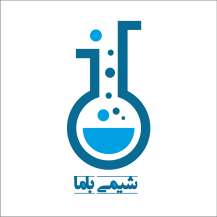
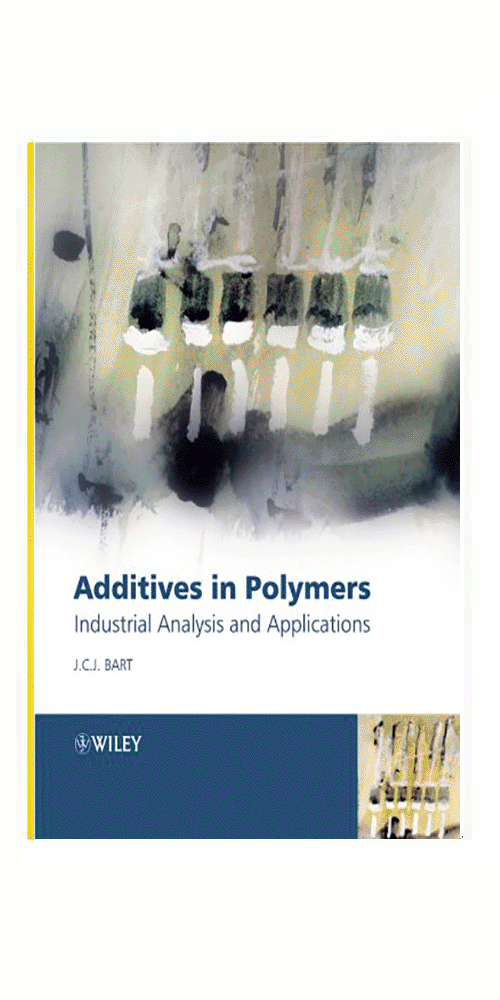
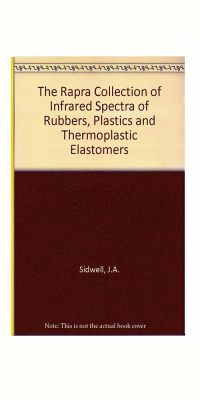
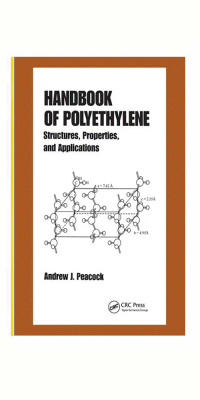
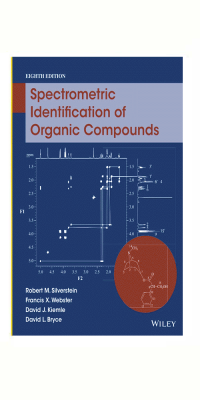
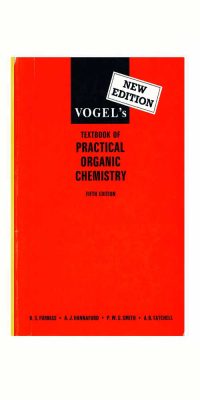

نقد و بررسیها
هنوز بررسیای ثبت نشده است.